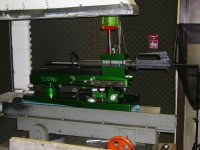In a series of 80% lower builds , I'm working with a "standard" 5.56 upper. Think "purchase based on price".
The purchased upper is sloppy beyond acceptable at the pivot pin. It might be .003 over sized. That needs fixed!
Over sized take down pins are available, but not that large, and reaming the lower would be needed even if undesired.
So I'm thinking "bushing" the upper hole.
Metal filled epoxy?
Ream to fit an aluminum (or steel) bushing, then redrill?
What would be the acceptable OD of the bushing?
What is the "best" clearance between upper and lower?
Sure this is all AR "gun plumbing", but someone must have an opinion. Better yet, have you re-bushed an AR upper?
The purchased upper is sloppy beyond acceptable at the pivot pin. It might be .003 over sized. That needs fixed!
Over sized take down pins are available, but not that large, and reaming the lower would be needed even if undesired.
So I'm thinking "bushing" the upper hole.
Metal filled epoxy?
Ream to fit an aluminum (or steel) bushing, then redrill?
What would be the acceptable OD of the bushing?
What is the "best" clearance between upper and lower?
Sure this is all AR "gun plumbing", but someone must have an opinion. Better yet, have you re-bushed an AR upper?


